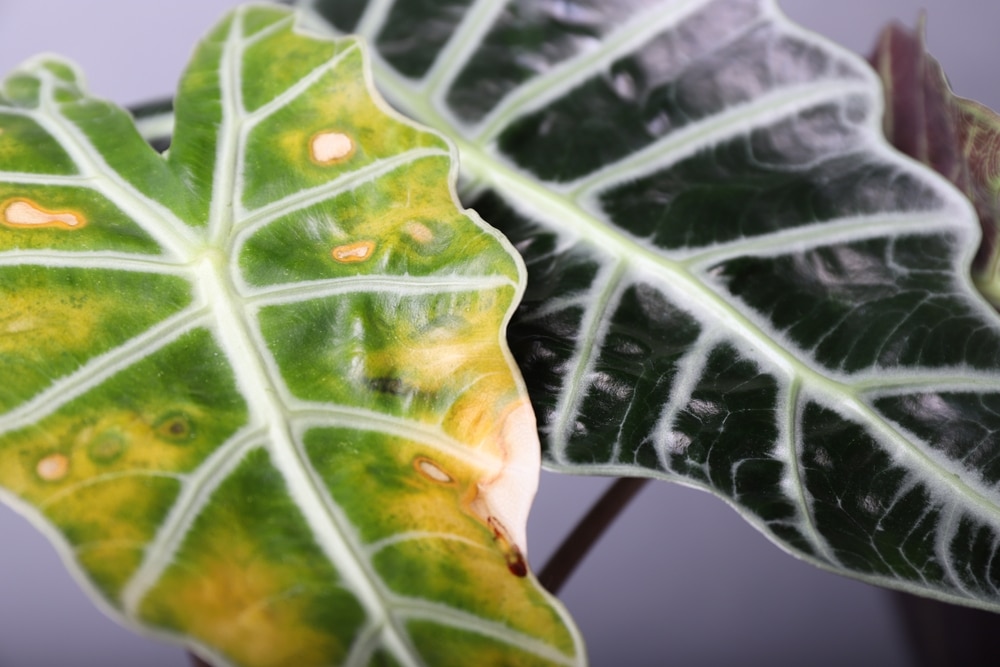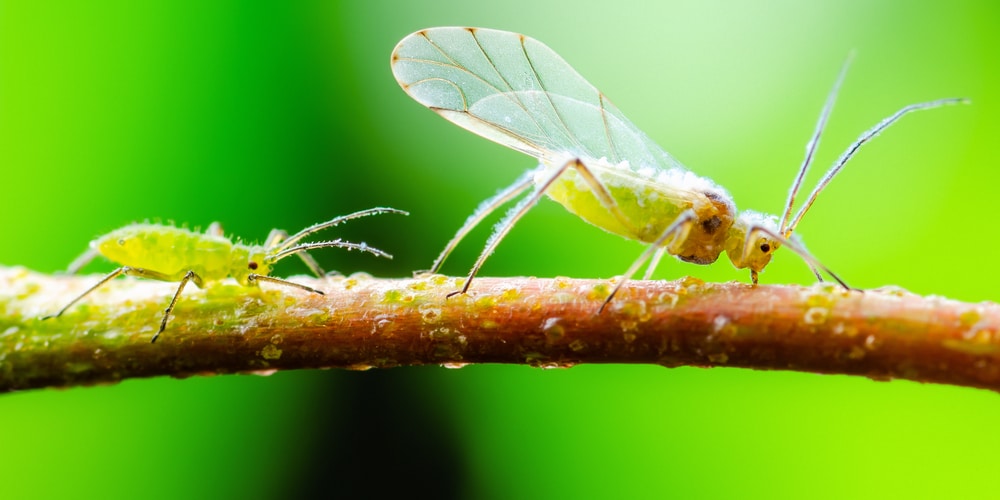Many things can cause the leaves of your Alocasia plant to turn yellow. Most causes are related to the plant’s basic needs regarding humidity, moisture, soil condition, and light levels.
Alocasia Leaves Turning Yellow

It is good to be aware of the changes in your plant. And to know what those changes mean so you can adjust as needed. With proper attention and care, your plants will thrive.
Overwatering
When a plant is overwatered, the soil becomes waterlogged, and the roots start to suffocate and die. The more time passes, the greater the damage to the roots. Roots will begin to decay after a while, and the ability of the plant to get enough nutrients becomes severely hindered.
Yellowing leaves and stunted, slow growth are the most noticeable symptoms of overwatering.
Even if the soil surface looks dry, the lower layers of soil may be damp. Check by digging down to the roots. If the dirt was wet for too long, you may notice a sour or rotten smell.
Fixing Overwatering
If your plant has not succumbed to root rot, you can still try to save it.
Step one is to inspect the roots of the plant. Start by treating any rot roots by spraying them with a fungicide. After treatment, repot the plant in drier (perhaps better-draining) soil.
Observe the plant for at least two days to see if it begins to regain some life, and do not water it for a week. Once the plant has recovered, make sure to change your watering habit. Try deep watering, and water less frequently.
Low Humidity
Alocasias are tropical and subtropical plants. So they require higher humidity than what may be in your environment. Humidity that is too low can cause yellowing leaves.
Improve the humidity for your plant by misting it and getting a humidifier to a place near it if you live in a non-tropical area.
Unfavorable Sunlight
While alocasias do best in full sun to partial shade conditions, they can still get too much or too little light.
Too little light will result in the leaves lightening and turning yellow. Remedy this by relocating the plant to an area where it can receive more indirect sunlight throughout the day.
If the leaves are yellow and have scorched, the plant receives too much direct sunlight. In this case, relocate the plant to an area where the sunlight is indirect but still consistent.
Pests
Alocasias are increasingly susceptible to pests like aphids and spider mites because of their large leaves. A pest infestation will cause the leaves to turn yellow. Look for tiny, white spots on the leaves if you suspect aphids or mites.
Spider Mites
Spider mite infestations can also cause the whole leaf to become discolored, begin curling, and be enveloped in sheets of webbing. Eventually, the leaf can drop.
To combat a spider mite infestation, continually treat the affected plants. Separate affected plants—destroy affected parts or entire plants if need be. One method is to spray your plants with a garden hose or other source of a strong stream of water.
Target the underside of the leaves. Repeat this process daily to combat and prevent the infestation from worsening. Insecticidal soap may be applied to the plant to kill off the mites—though it can also kill insects that naturally prey on spider mites.
Aphids
Aphids appear as pale yellow spots on leaves. Leaves may also be curled, puckered, or stunted, and blooms can be distorted.
Just as with spider mites, you can spray aphids off the leaves. A long-term approach may be to grow plants that attract the insects that prey on aphids, such as ladybugs and praying mantis.
In Conclusion
There are signs that plants use to alert us that they are struggling in their current conditions. Unfortunately, not all of these signs directly tell us what needs to be fixed. Paying close attention to your plant and researching what you need to can help keep your plant beautiful and thriving.
